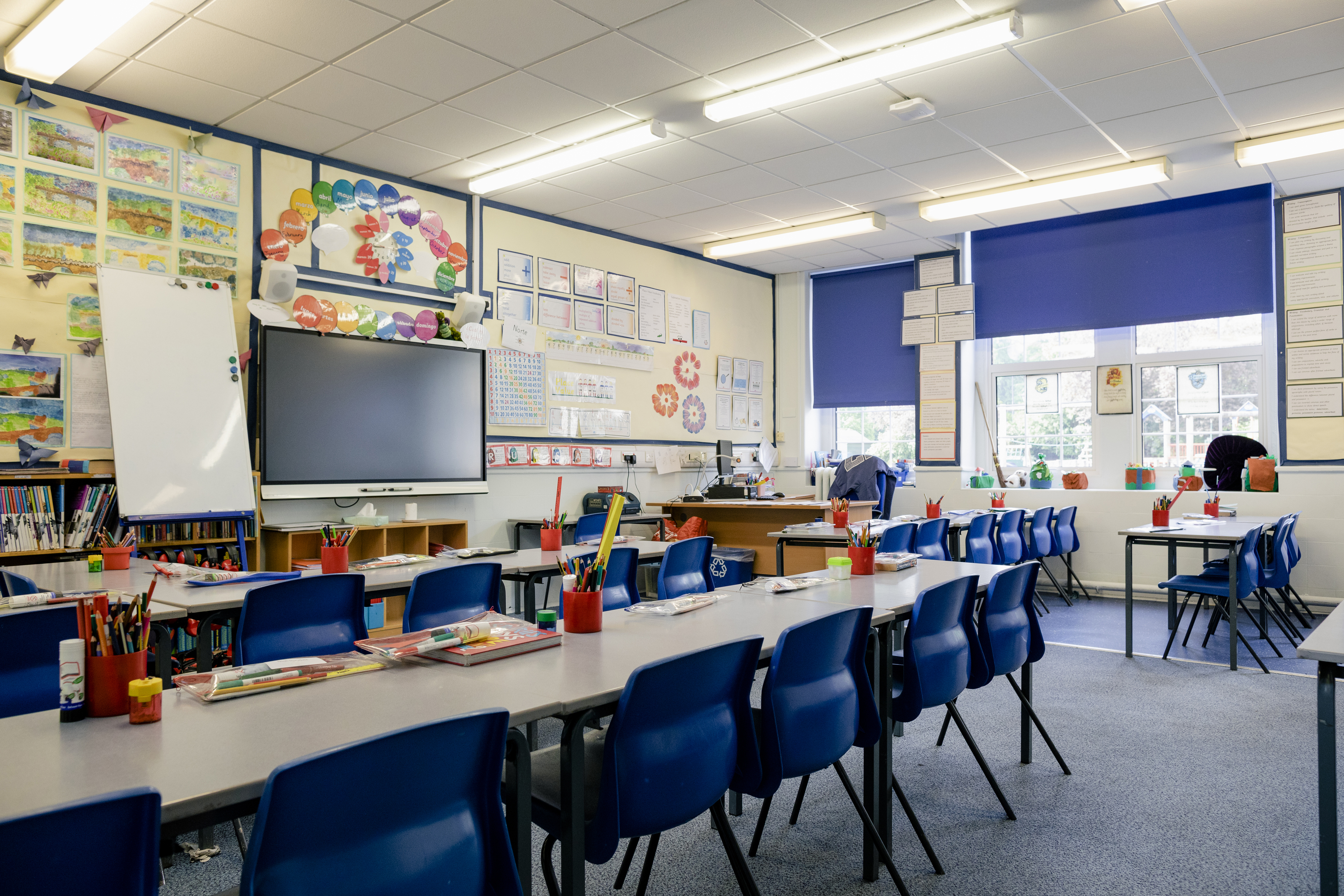 (iStock/SolStock)
(iStock/SolStock)
While much of school violence research centers on the safety of students, educators also suffer acts of violence and abuse at troubling levels. This violence leads to almost half of the teachers surveyed wanting to quit the field or transfer jobs, according to
new research from the American Psychological Association Task Force on Violence Against Educators and School Personnel. Led by a DePaul professor, the task force presented its
findings to D.C. lawmakers on March 17 and recommended
policy priorities for Congress to consider.
 DePaul's Susan Dvorak McMahon chair of the the American Psychological Association Task Force on Violence Against Educators and School Personnel, which presented findings to D.C. lawmakers March 17. (Courtesy of Susan Dvorak McMahon)
DePaul's Susan Dvorak McMahon chair of the the American Psychological Association Task Force on Violence Against Educators and School Personnel, which presented findings to D.C. lawmakers March 17. (Courtesy of Susan Dvorak McMahon)Of the nearly 15,000 participants surveyed, almost half of the teachers reported a desire to quit or transfer jobs. Between 29-34% of other school employees surveyed revealed similar concerns and plans, says Susan Dvorak McMahon, chair of the task force, a Vincent de Paul Professor of clinical and community psychology, and an associate dean for research and graduate programs in the College of Science and Health.
“The U.S. is experiencing trends of increased stress that lead to employee turnover in our nation’s schools," she says. "Current and future decisions to leave the field of education affect the quality of our schools and the next generations of learners, educators and school leaders. Physical and verbal violence directed against educators may be exacerbating reports of high stress, transfers and leaving the profession."
In this Q&A, McMahon discusses the key findings from the task force survey, why violence against educators can lead to a worse educational experience for children and potential solutions.
How is violence against educators defined?
Our task force defined violence in many ways, including verbal threats, sexual harassment, bullying, intimidation, objects thrown and physical attacks at the hands of students, colleagues, parents or administrators. Educators and school personnel include general and special education teachers, school psychologists and social workers, school administration and staff with a wide range of roles. We’ve found the most commonly occurring forms of aggression during COVID-19 are verbal or threatening aggression by students and parents towards teachers and administrators.
What are the key findings from the task force’s research?
We surveyed participants between July 2020 and June 2021 and asked teachers, administrators, school psychologists, social workers and other school staff members to rate their experiences since March 2020, the beginning of the COVID-19 pandemic. In addition to 49% of teachers expressing a desire to either quit the profession or transfer jobs, one-third of surveyed teachers reported experiencing at least one incident of verbal or threatening violence from students during the COVID-19 pandemic. More than 40% of school administrators reported verbal or threatening violence from parents. School staff (e.g., paraprofessionals, school counselors, instructional aides, school resource officers), a typically unexamined group, reported the highest rates of student physical violence, with 22% of staff reporting at least one incident of physical violence during the pandemic.
Keep in mind, many schools were remote or hybrid during the time of this survey, so the results are even more concerning. These rates of violence are extremely problematic and may contribute to teachers and school personnel wanting to quit or transfer.
The task force report described violence against educators as a ‘public health problem.’ What are some suggestions for solving this problem?
We need comprehensive research-based solutions. Better support for school personnel and student mental health and well-being would be a good first step. This would entail establishing mental health programs for educators, school personnel and students, which would improve well-being among individuals as well as the work environment, ultimately better addressing student needs.
We also need to enhance school organizational functioning, like enhancing teacher and parent collaboration, adding educator voices to decision-making and increasing funding to all schools, especially high-need school districts. We need to build capacity through improved educator preparation programs and continuing education on social and emotional learning and trauma-informed teaching.
The task force also suggests reducing the use of zero-tolerance policies, exclusionary approaches and school hardening strategies, and replacing them with non-punitive approaches to addressing challenging behaviors, such as restorative justice and de-escalation strategies.
How can violence against teachers in particular lead to a worse educational experience for children?
If there are issues of violence and aggression in the classroom, the central goal of education can quickly get lost. We also know violence can negatively affect mental and physical health. That’s true whether you’re a teacher, staff member or student. Educator turnover in schools is higher when you have these kinds of problems. It’s also related to student learning. It’s all interrelated. If you are in a school where educators are the target of more violence, more than likely you are in a school where students are also experiencing more violence.
###
Source:
Susan Dvorak McMahon
Media contact:
Russell Dorn
312-362-7128